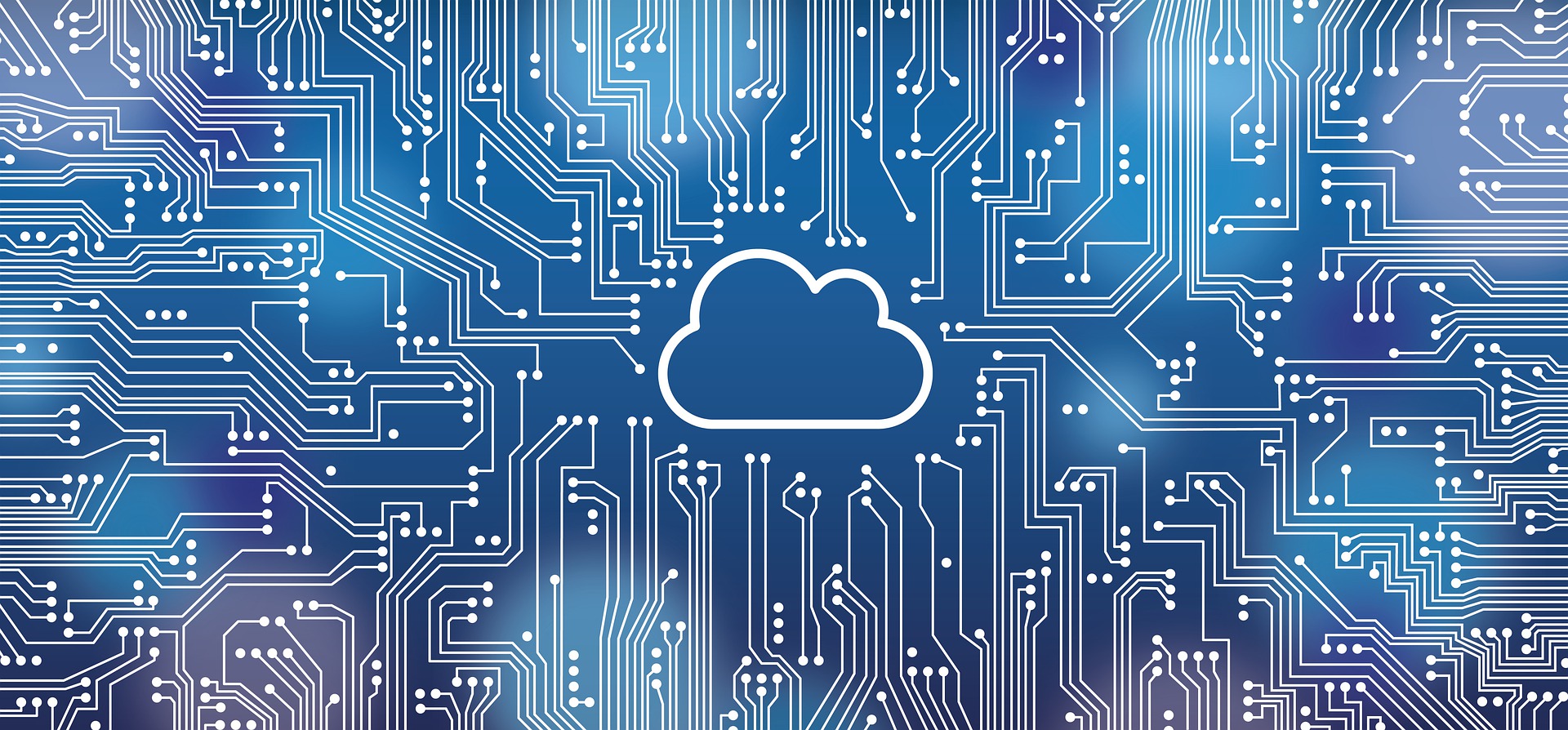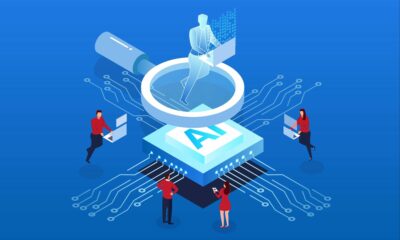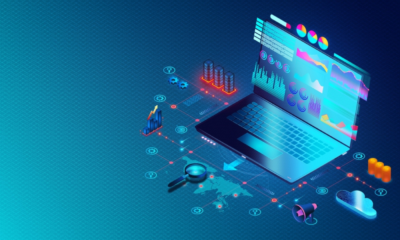TECHNOLOGY
Still a work in progress for many

It’s hard to overstate the key role of application reliability and performance for today’s organisations. To compete effectively and grow in modern digital markets, businesses must meet high customer expectations for a great experience. Hybrid workplace strategies and work-from-home policies make it all the more critical to deliver a consistent high-quality experience wherever people work. Rising cyberthreats and an expanding attack surface call for a heightened focus on security. And agility is a must to support innovation and keep pace with fast-moving markets.
To address these needs, organisations increasingly host their applications in hybrid cloud and multi-cloud environments. In a recent survey, A10 Networks and Gatepoint Research asked senior technology decision-makers about their experiences delivering applications in the cloud, and what today’s organisations need to achieve the digital resiliency on which their businesses depend.
Given the critical role of application delivery performance in digital business success, the fact that only 34% of companies are highly satisfied with their application delivery controller (ADC) solution should raise eyebrows.
Modern Business runs on Hybrid Cloud and Multi-cloud Application Delivery
A key finding from the survey reveals the combination of cloud approaches used by modern businesses. While most respondents continue to host applications on-premises, 85% use public cloud platforms—usually more than one—and 43% use private clouds.
This approach offers several potential benefits. A more diverse application infrastructure allows greater flexibility to host each application on the optimal platform, in the optimal location, to ensure availability and responsiveness. By tapping into scalable resources on-demand, companies can adapt more quickly to changing business needs, IT strategies and shifting customer demand. Moving to more economical and flexible licensing and pay-as-you-go models can free up funds for innovation. And with the right tools, organisations can achieve better visibility into end-to-end application security and performance than a traditional on-premises data centre could offer.
Nonetheless, as seen in the low rate of satisfaction reported in the survey, many organisations are hampered by application delivery technologies that fail to meet their requirements.
How Underperforming ADCs Undermine the Promise of the Cloud
Ensuring application delivery performance in a hybrid cloud and multi-cloud environment hinges on several key ADC functions. Global server load balancing (GSLB) is essential, as organisations need to go beyond traditional disaster recovery requirements to optimise traffic and ensure availability across multiple data centres and clouds.
With the vast majority of internet traffic now encrypted, TLS/SSL offload makes it possible to perform TLS/SSL encryption and decryption without straining server resources or creating bottlenecks. Application acceleration and optimisation capabilities, including application analytics, fast root-cause analysis, and performance feedback for developers, are invaluable for delivering an outstanding and consistent customer experience while keeping employees fully productive and engaged.
However, application delivery solutions currently in place often fall short of these requirements. Half of survey respondents reported ongoing struggles with legacy application delivery technology. Nearly a third face challenges addressing application security threats. Over one in four experience application downtime and slow performance, and more than 20% face visibility and reporting challenges.
To overcome these challenges and realise the full business benefits of their hybrid and multi-cloud strategy, these organisations will need to modernise their application delivery infrastructure.
The Agenda for Hybrid Cloud and Multi-cloud App Delivery
The gap between outdated application delivery solutions and modern requirements only continues to grow. With hybrid cloud and multi-cloud complexity rising, organisations need to be able to deploy and deliver applications more flexibly and efficiently, avoid being bogged down in manual tasks, and gain greater insight to ensure that fast-changing environments maintain performance and availability. These needs are reflected in the survey respondents’ key objectives for the coming year. 48% reported plans to increase agility with software/scale-out solutions, while 47% intend to drive operational efficiency through the deployment of hybrid cloud automation, management, and analytics capabilities.
Survey respondents understood that modernising the ADC will be essential to achieving these goals. Asked about the most important capabilities to ensure successful business objectives, 69% named faster troubleshooting and root-cause analysis, which depend on centralised management, analytics, and reporting to better understand their environment and its performance. More than half cited automation as a need to overcome challenges in IT skills development in a fast-changing technology environment, and a similar number saw a need for data analytics and application insights to guide performance optimisation, troubleshooting, security, and more.
Ensuring Digital Resiliency for Better Business Performance
As companies evaluate their existing ADCs and consider future investments, their priorities are closely tied to bottom-line performance. To maximise ROI, they will need to be able to both increase revenue and control expenses. On the revenue side, better application performance will help them deliver outstanding experiences to win and retain customers in competitive markets, as well as keep their workforce engaged, productive, and satisfied.
A modern application delivery approach is clearly needed to help organisations right-size investments by enabling more efficient management, reducing calls to customer support, averting costly and disruptive security breaches, providing agile software options, and leveraging new advanced observability.
Source link
TECHNOLOGY
Next-gen chips, Amazon Q, and speedy S3

AWS re:Invent, which has been taking place from November 27 and runs to December 1, has had its usual plethora of announcements: a total of 21 at time of print.
Perhaps not surprisingly, given the huge potential impact of generative AI – ChatGPT officially turns one year old today – a lot of focus has been on the AI side for AWS’ announcements, including a major partnership inked with NVIDIA across infrastructure, software, and services.
Yet there has been plenty more announced at the Las Vegas jamboree besides. Here, CloudTech rounds up the best of the rest:
Next-generation chips
This was the other major AI-focused announcement at re:Invent: the launch of two new chips, AWS Graviton4 and AWS Trainium2, for training and running AI and machine learning (ML) models, among other customer workloads. Graviton4 shapes up against its predecessor with 30% better compute performance, 50% more cores and 75% more memory bandwidth, while Trainium2 delivers up to four times faster training than before and will be able to be deployed in EC2 UltraClusters of up to 100,000 chips.
The EC2 UltraClusters are designed to ‘deliver the highest performance, most energy efficient AI model training infrastructure in the cloud’, as AWS puts it. With it, customers will be able to train large language models in ‘a fraction of the time’, as well as double energy efficiency.
As ever, AWS offers customers who are already utilising these tools. Databricks, Epic and SAP are among the companies cited as using the new AWS-designed chips.
Zero-ETL integrations
AWS announced new Amazon Aurora PostgreSQL, Amazon DynamoDB, and Amazon Relational Database Services (Amazon RDS) for MySQL integrations with Amazon Redshift, AWS’ cloud data warehouse. The zero-ETL integrations – eliminating the need to build ETL (extract, transform, load) data pipelines – make it easier to connect and analyse transactional data across various relational and non-relational databases in Amazon Redshift.
A simple example of how zero-ETL functions can be seen is in a hypothetical company which stores transactional data – time of transaction, items bought, where the transaction occurred – in a relational database, but use another analytics tool to analyse data in a non-relational database. To connect it all up, companies would previously have to construct ETL data pipelines which are a time and money sink.
The latest integrations “build on AWS’s zero-ETL foundation… so customers can quickly and easily connect all of their data, no matter where it lives,” the company said.
Amazon S3 Express One Zone
AWS announced the general availability of Amazon S3 Express One Zone, a new storage class purpose-built for customers’ most frequently-accessed data. Data access speed is up to 10 times faster and request costs up to 50% lower than standard S3. Companies can also opt to collocate their Amazon S3 Express One Zone data in the same availability zone as their compute resources.
Companies and partners who are using Amazon S3 Express One Zone include ChaosSearch, Cloudera, and Pinterest.
Amazon Q
A new product, and an interesting pivot, again with generative AI at its core. Amazon Q was announced as a ‘new type of generative AI-powered assistant’ which can be tailored to a customer’s business. “Customers can get fast, relevant answers to pressing questions, generate content, and take actions – all informed by a customer’s information repositories, code, and enterprise systems,” AWS added. The service also can assist companies building on AWS, as well as companies using AWS applications for business intelligence, contact centres, and supply chain management.
Customers cited as early adopters include Accenture, BMW and Wunderkind.
Want to learn more about cybersecurity and the cloud from industry leaders? Check out Cyber Security & Cloud Expo taking place in Amsterdam, California, and London. Explore other upcoming enterprise technology events and webinars powered by TechForge here.
TECHNOLOGY
HCLTech and Cisco create collaborative hybrid workplaces

Digital comms specialist Cisco and global tech firm HCLTech have teamed up to launch Meeting-Rooms-as-a-Service (MRaaS).
Available on a subscription model, this solution modernises legacy meeting rooms and enables users to join meetings from any meeting solution provider using Webex devices.
The MRaaS solution helps enterprises simplify the design, implementation and maintenance of integrated meeting rooms, enabling seamless collaboration for their globally distributed hybrid workforces.
Rakshit Ghura, senior VP and Global head of digital workplace services, HCLTech, said: “MRaaS combines our consulting and managed services expertise with Cisco’s proficiency in Webex devices to change the way employees conceptualise, organise and interact in a collaborative environment for a modern hybrid work model.
“The common vision of our partnership is to elevate the collaboration experience at work and drive productivity through modern meeting rooms.”
Alexandra Zagury, VP of partner managed and as-a-Service Sales at Cisco, said: “Our partnership with HCLTech helps our clients transform their offices through cost-effective managed services that support the ongoing evolution of workspaces.
“As we reimagine the modern office, we are making it easier to support collaboration and productivity among workers, whether they are in the office or elsewhere.”
Cisco’s Webex collaboration devices harness the power of artificial intelligence to offer intuitive, seamless collaboration experiences, enabling meeting rooms with smart features such as meeting zones, intelligent people framing, optimised attendee audio and background noise removal, among others.
Want to learn more about cybersecurity and the cloud from industry leaders? Check out Cyber Security & Cloud Expo taking place in Amsterdam, California, and London. Explore other upcoming enterprise technology events and webinars powered by TechForge here.
TECHNOLOGY
Canonical releases low-touch private cloud MicroCloud

Canonical has announced the general availability of MicroCloud, a low-touch, open source cloud solution. MicroCloud is part of Canonical’s growing cloud infrastructure portfolio.
It is purpose-built for scalable clusters and edge deployments for all types of enterprises. It is designed with simplicity, security and automation in mind, minimising the time and effort to both deploy and maintain it. Conveniently, enterprise support for MicroCloud is offered as part of Canonical’s Ubuntu Pro subscription, with several support tiers available, and priced per node.
MicroClouds are optimised for repeatable and reliable remote deployments. A single command initiates the orchestration and clustering of various components with minimal involvement by the user, resulting in a fully functional cloud within minutes. This simplified deployment process significantly reduces the barrier to entry, putting a production-grade cloud at everyone’s fingertips.
Juan Manuel Ventura, head of architectures & technologies at Spindox, said: “Cloud computing is not only about technology, it’s the beating heart of any modern industrial transformation, driving agility and innovation. Our mission is to provide our customers with the most effective ways to innovate and bring value; having a complexity-free cloud infrastructure is one important piece of that puzzle. With MicroCloud, the focus shifts away from struggling with cloud operations to solving real business challenges” says
In addition to seamless deployment, MicroCloud prioritises security and ease of maintenance. All MicroCloud components are built with strict confinement for increased security, with over-the-air transactional updates that preserve data and roll back on errors automatically. Upgrades to newer versions are handled automatically and without downtime, with the mechanisms to hold or schedule them as needed.
With this approach, MicroCloud caters to both on-premise clouds but also edge deployments at remote locations, allowing organisations to use the same infrastructure primitives and services wherever they are needed. It is suitable for business-in-branch office locations or industrial use inside a factory, as well as distributed locations where the focus is on replicability and unattended operations.
Cedric Gegout, VP of product at Canonical, said: “As data becomes more distributed, the infrastructure has to follow. Cloud computing is now distributed, spanning across data centres, far and near edge computing appliances. MicroCloud is our answer to that.
“By packaging known infrastructure primitives in a portable and unattended way, we are delivering a simpler, more prescriptive cloud experience that makes zero-ops a reality for many Industries.“
MicroCloud’s lightweight architecture makes it usable on both commodity and high-end hardware, with several ways to further reduce its footprint depending on your workload needs. In addition to the standard Ubuntu Server or Desktop, MicroClouds can be run on Ubuntu Core – a lightweight OS optimised for the edge. With Ubuntu Core, MicroClouds are a perfect solution for far-edge locations with limited computing capabilities. Users can choose to run their workloads using Kubernetes or via system containers. System containers based on LXD behave similarly to traditional VMs but consume fewer resources while providing bare-metal performance.
Coupled with Canonical’s Ubuntu Pro + Support subscription, MicroCloud users can benefit from an enterprise-grade open source cloud solution that is fully supported and with better economics. An Ubuntu Pro subscription offers security maintenance for the broadest collection of open-source software available from a single vendor today. It covers over 30k packages with a consistent security maintenance commitment, and additional features such as kernel livepatch, systems management at scale, certified compliance and hardening profiles enabling easy adoption for enterprises. With per-node pricing and no hidden fees, customers can rest assured that their environment is secure and supported without the expensive price tag typically associated with cloud solutions.
Want to learn more about cybersecurity and the cloud from industry leaders? Check out Cyber Security & Cloud Expo taking place in Amsterdam, California, and London. Explore other upcoming enterprise technology events and webinars powered by TechForge here.
-

 PPC5 days ago
PPC5 days agoHow the TikTok Algorithm Works in 2024 (+9 Ways to Go Viral)
-

 MARKETING6 days ago
MARKETING6 days agoA Recap of Everything Marketers & Advertisers Need to Know
-

 SEO6 days ago
SEO6 days agoBlog Post Checklist: Check All Prior to Hitting “Publish”
-

 SEO4 days ago
SEO4 days agoHow to Use Keywords for SEO: The Complete Beginner’s Guide
-

 MARKETING5 days ago
MARKETING5 days agoHow To Protect Your People and Brand
-

 SEARCHENGINES6 days ago
SEARCHENGINES6 days agoGoogle Started Enforcing The Site Reputation Abuse Policy
-

 PPC6 days ago
PPC6 days agoHow to Craft Compelling Google Ads for eCommerce
-

 MARKETING6 days ago
MARKETING6 days agoElevating Women in SEO for a More Inclusive Industry
















You must be logged in to post a comment Login